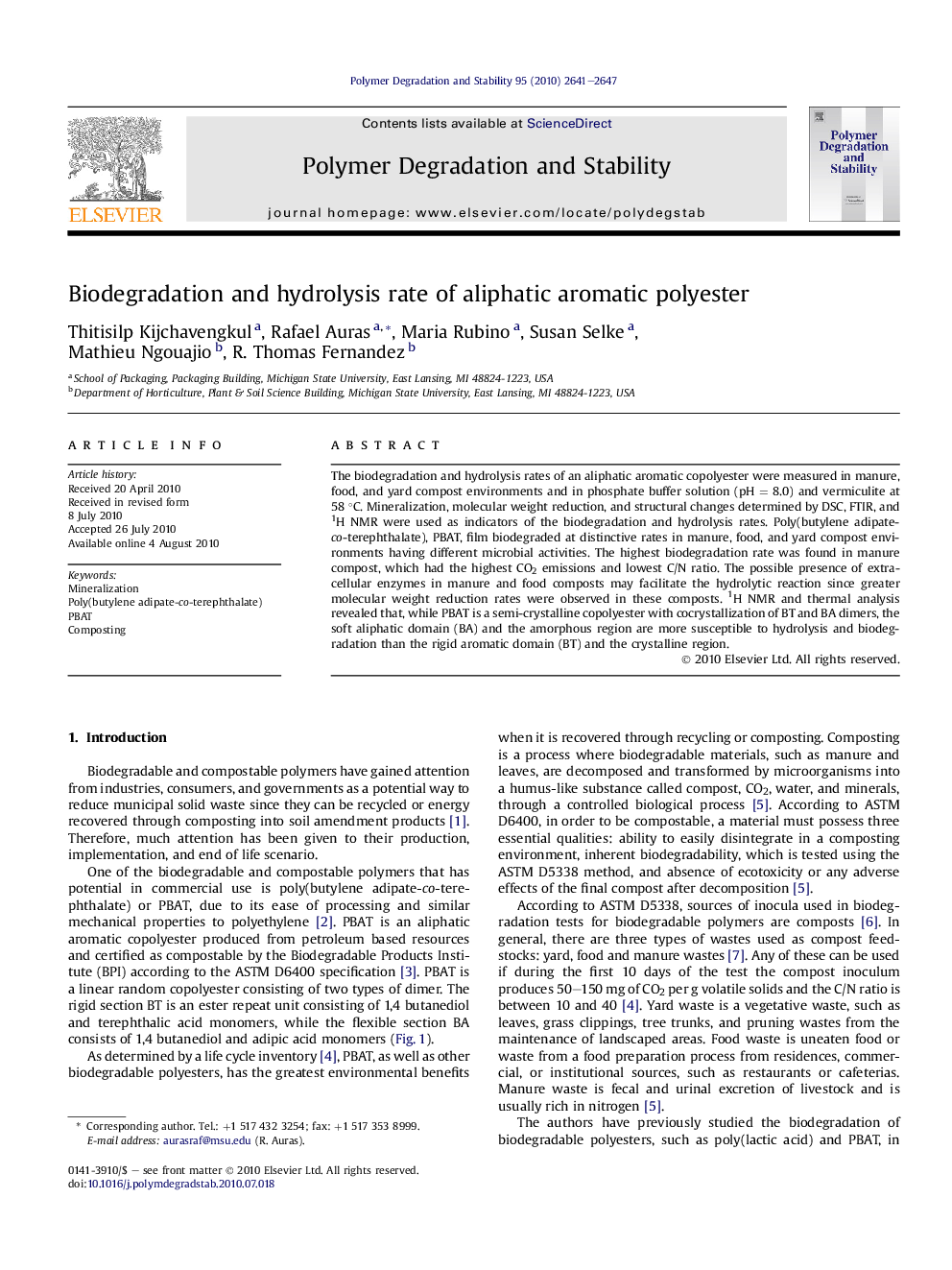| Article ID | Journal | Published Year | Pages | File Type |
|---|---|---|---|---|
| 5203215 | Polymer Degradation and Stability | 2010 | 7 Pages |
Abstract
The biodegradation and hydrolysis rates of an aliphatic aromatic copolyester were measured in manure, food, and yard compost environments and in phosphate buffer solution (pH = 8.0) and vermiculite at 58 °C. Mineralization, molecular weight reduction, and structural changes determined by DSC, FTIR, and 1H NMR were used as indicators of the biodegradation and hydrolysis rates. Poly(butylene adipate-co-terephthalate), PBAT, film biodegraded at distinctive rates in manure, food, and yard compost environments having different microbial activities. The highest biodegradation rate was found in manure compost, which had the highest CO2 emissions and lowest C/N ratio. The possible presence of extracellular enzymes in manure and food composts may facilitate the hydrolytic reaction since greater molecular weight reduction rates were observed in these composts. 1H NMR and thermal analysis revealed that, while PBAT is a semi-crystalline copolyester with cocrystallization of BT and BA dimers, the soft aliphatic domain (BA) and the amorphous region are more susceptible to hydrolysis and biodegradation than the rigid aromatic domain (BT) and the crystalline region.
Related Topics
Physical Sciences and Engineering
Chemistry
Organic Chemistry
Authors
Thitisilp Kijchavengkul, Rafael Auras, Maria Rubino, Susan Selke, Mathieu Ngouajio, R. Thomas Fernandez,
